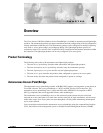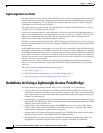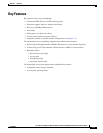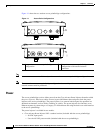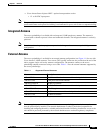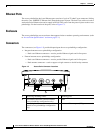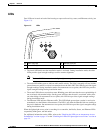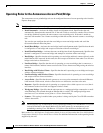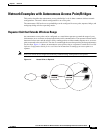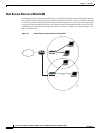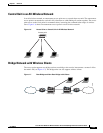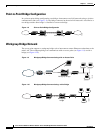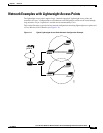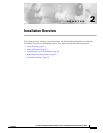
1-8
Cisco Aironet 1300 Series Wireless Outdoor Access Point/Bridge Hardware Installation Guide
OL-5048-06
Chapter 1 Overview
Key Features
Operating Roles for the Autonomous Access Point/Bridge
The autonomous access point/bridge unit can be configured into one of seven operating roles from the
Express Setup page:
Note The lightweight access point only supports the access point operating role.
• Install Automatic—Activates the bridge install and alignment mode. Specifies that the unit
automatically determines the network role. If the unit is able to associate to another Cisco Aironet
root bridge within 60 seconds, the unit assumes a non-root bridge role. If the unit is unable to
associate with another Cisco Aironet root bridge within 60 seconds, the unit assumes a root bridge
role.
You can also pre-configure the unit into root bridge or non-root bridge modes and avoid the
60-second automatic detection phase.
• Install Root Bridge—Activates the root bridge install and alignment mode. Specifies that the unit
is configured as a root bridge and accepts associations with non-root bridges.
• Install Non-Root Bridge—Activates the non-root bridge install and alignment mode. Specifies that
the unit is configured as a non-root bridge and attempts to associate with a root bridge.
• Root Bridge—Specifies that the unit is operating as a root bridge and that it connects directly to the
main Ethernet LAN network. In this mode, the unit accepts associations from other Cisco Aironet
bridges and wireless client devices.
• Non-Root Bridge—Specifies that the unit is operating as a non-root bridge, that it connects to a
remote LAN network, and that it must associate with a Cisco Aironet root bridge using the wireless
interface.
• Root Bridge with Wireless Clients—Specifies that the unit is operating as a root bridge and accepts
wireless client associations.
• Non-Root Bridge with Wireless Clients—Specifies that the unit is operating as a non-root bridge
and accepts wireless client associations.
• Access Point—Specifies that the unit operates as an access point connected to the main Ethernet
LAN network. In this mode, wireless client devices are allowed to associate to the unit.
• Repeater—Specifies that the unit is operating as a repeater (also called repeater non-root) that is
not connected to the wired LAN and supports wireless clients.
• Workgroup Bridge—Specifies that the unit operates as a workgroup bridge connected to a small
wired Ethernet LAN network through an Ethernet hub or switch. The workgroup bridge must
associate to a Cisco Aironet access point or a Cisco Aironet bridge.
• Scanner—This setting is enabled when your product is being used by the Cisco WLSE to monitor
wireless data traffic.
Note On initial power up, an autonomous access point/bridge running Cisco IOS Release 12.3(2)JA2
and earlier defaults to the Install-Mode role. On initial power up, an autonomous access
point/bridge running Cisco IOS Release 12.3(4)JA or later defaults to the Root AP role.
Refer to the Cisco IOS Software Configuration Guide for Access Points and to the Cisco IOS Software
Configuration Guide for Cisco Aironet Access Points for additional information on the operating modes
supported by the unit.




